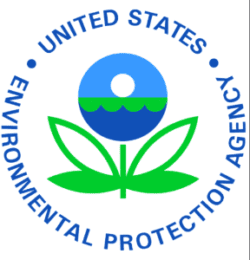On this page:
- Designations: How do we know if an area is not meeting the standards?
- What are state implementation plan (SIP) requirements?
- How do states develop SIPs and start attaining the standards?
Designations: How do we know if an area is not meeting particulate matter (PM) standards?
Areas within each state are “designated” as either meeting (attaining) PM standards or not meeting them. In some cases, an entire state may attain a standard.
Those areas that exceed the standards are known as “nonattainment areas.” Nonattainment areas for PM and the other criteria air pollutants are listed in the Green Book.
- The NAAQS designations process
- Green Book Area Information:
- PM Designations: Information on the process EPA, the states, and the tribes follow to determine whether or not an area is meeting the revised national air quality standards for PM established in 2012, 2006, 1997, and 1987.
Along with developing the PM standards themselves (part of the National Ambient Air Quality Standards, or NAAQS), EPA also develops requirements for how to go about attaining and maintaining those standards:
- 2012 PM NAAQS Timelines: Learn how implementation of the 2012 standards will develop alongside continued implementation of the 2006 standards.
How does EPA help areas maintain PM standards?
- The Advance Program is a collaborative effort between EPA, states, tribes, and local governments. It encourages expeditious emission reductions primarily in attainment areas to help these areas continue to meet the NAAQS.
- Burn Wise is a voluntary partnership program between EPA, state agencies, manufacturers, and consumers to emphasize the importance of burning the right wood, the right way, in the right appliance.
- More programs that help states attain standards.
What are state implementation plan (SIP) requirements?
Air quality standards get applied, or implemented, through controlling air pollution from emission sources. Each state is required to develop a plan for how they will control air pollution within their jurisdiction. This plan is called a State Implementation Plan (SIP).
In general, the SIP consists of programs (air quality monitoring and modeling, and emission inventories and control strategies) and documents (policies and rules) that the state uses to attain and maintain the NAAQS.
A state must engage the public, through notices and public hearings, before sending the SIP to EPA for approval. Tribes may develop plans if they choose to do so, otherwise EPA will develop an implementation plan for them. Learn more about SIP requirements, and how EPA works together with states to meet them.
- Learn more about the NAAQS implementation process
- SIP Status for each State, including tribal implementation plans (TIPs):
- EPA evaluates the submitted SIPs, then issues a notice, indicating that either the SIP has been approved or needs additional work. Once the SIP has been approved, the state implements its air pollution control strategies to gradually reduce PM pollution.
How do states develop SIPs and start attaining the standards?
EPA’s checklist guide to preparing a PM SIP: State, local, and tribal air quality agencies can find assistance in developing their plans to implement PM standards. Tools include timeframes for submitting parts of the SIP, and how to use emissions data to demonstrate progress in reducing PM.
States with areas that are starting to monitor attainment can check out:
Redesignations and Clean Data Policy (CDP): Areas can demonstrate attainment using air quality modeling and other analyses.
EPA has also developed training resources, various presentations and webinars to explain the implementation process and assist the air agencies.
EPA evaluates the submitted SIPs, then issues a notice, indicating that either the SIP has been approved or needs additional work. Once the SIP has been approved, the state implements its air pollution control strategies to gradually reduce PM pollution. Get information about the SIP status for each state.




